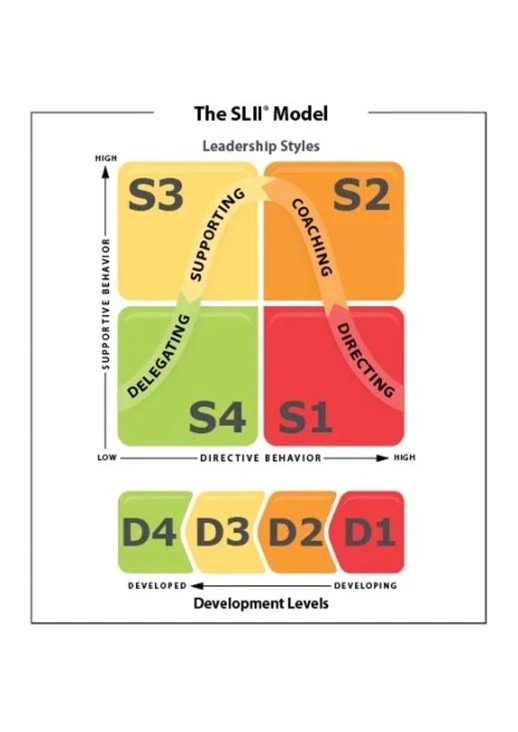What is situational leadership?
Situational leadership is a leadership theory in which the situation and the individual employee are the focus. The philosophy was developed by Ken Blanchard og Paul Hersey in 1969 and has since been further developed.
When you apply situational leadership as your leadership tool, the starting point is to adjust your way of leading according to the challenge and the employee you face.
Situational leadership bridges the employee’s competence and engagement with the leadership style that the leader chooses to apply.
While situational leadership is referred to as a leadership tool, the underlying idea is that the employee is involved. In this way, you create a common foundation – or language – to achieve the best collaboration between leader and employee. Situational leadership views leadership as a partnership, where it is natural for employees to take joint responsibility for being led.
The theory behind situational leadership
The essence of the situational leadership theory is that employees become more motivated and perform better if the leadership style is adapted to the individual employee and the specific task they face.
Depending on the employee’s developmental level—that is, their competence and engagement—the leader chooses whether the leadership style should be instructing, coaching, supportive, or delegating. For this purpose, four developmental levels and four leadership styles have been defined.

The top of the model illustrates the four leadership styles – Style 1 (Directing), Style 2 (Coaching), Style 3 (Supporting), and Style 4 (Delegating). These leadership styles correspond to the four development levels – D1, D2, D3, and D4 – shown at the bottom of the model.
The four developmental levels
Although many factors can influence a person’s ability to solve a given task, situational leadership focuses primarily on one factor: the employee’s developmental level. The developmental level is defined by combining the employee’s competence and engagement in relation to the task.
- Competence: This is defined as the employee’s knowledge and skills relevant to the task and largely depends on their experience in the field.
- Engagement: This is a combination of the employee’s self-confidence and motivation to solve the task.
An employee’s competence and engagement can vary depending on the task at hand. The four developmental levels are:
De fire udviklingsniveauer ser således ud:
- U1: Low competence – high engagement
- U2: Low to some competence – low engagement
- U3: Moderate to high competence – fluctuating engagement
- U4: High competence – high engagement
If an employee is faced with a task without prior experience, they will typically be enthusiastic and ready to learn (U1). After starting the task, they may find it more challenging or different than expected, leading to a drop in engagement (U2). As the employee acquires the necessary knowledge and skills, their competence increases, though they may still be uncertain of their ability (U3). With the right support, the employee gains confidence in their abilities, ultimately reaching high competence and high engagement (U4).
The four leadership styles
Based on the employee’s developmental level, the leader can now assess which leadership style is appropriate. An employee with low competence in relation to a specific task typically needs a high degree of instruction to develop their skills, whereas an employee with high competence needs little instruction.
Similarly, an employee with high engagement does not require much support from the leader, whereas one with low engagement does.
The four leadership styles correspond to the developmental levels (U1–U4) and are designated as S1–S4:
|
S1 Low Competence – high Engagement
|
Instructing
An employee with low competence but high engagement. The leader must focus on instructing the employee, with little need for additional support.
|
|
S2 Low to some competence and low engagement
|
Coaching
An employee with low to some competence and low engagement. The leader provides a high level of instruction and support.
|
|
S3 Moderate to high competence but fluctuating engagement
|
Supporting
An employee with moderate to high competence but fluctuating engagement. The leader offers minimal instruction and instead focuses on supporting the employee.
|
|
S4 High competence and high engagement
|
Delegating
An employee with high competence and high engagement. The leader provides very little instruction or support, giving the employee the freedom to handle the task independently.
|


